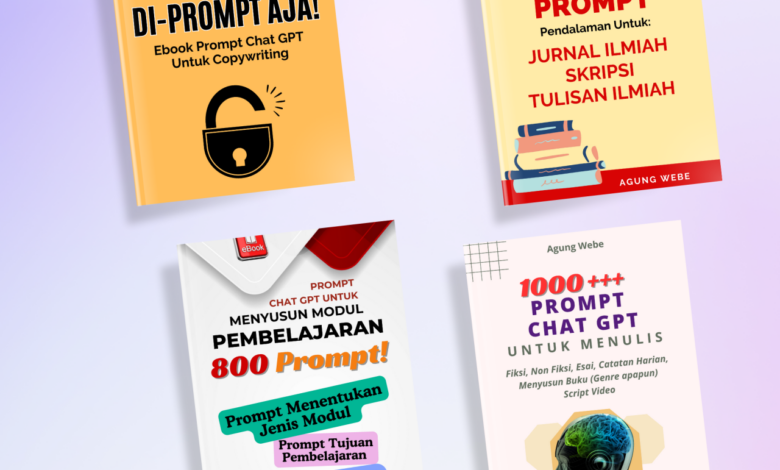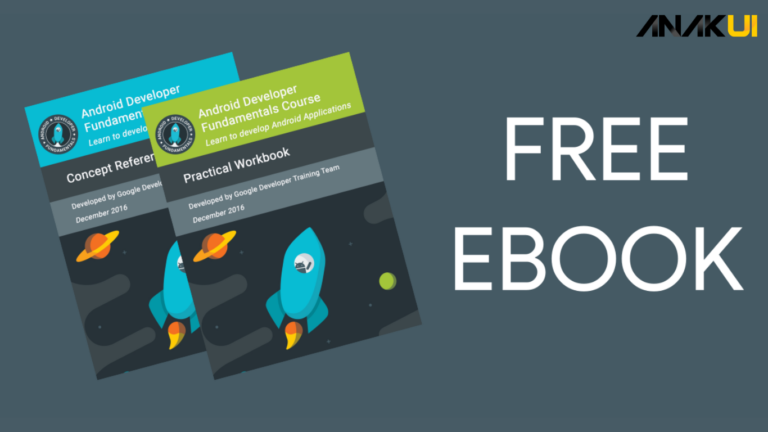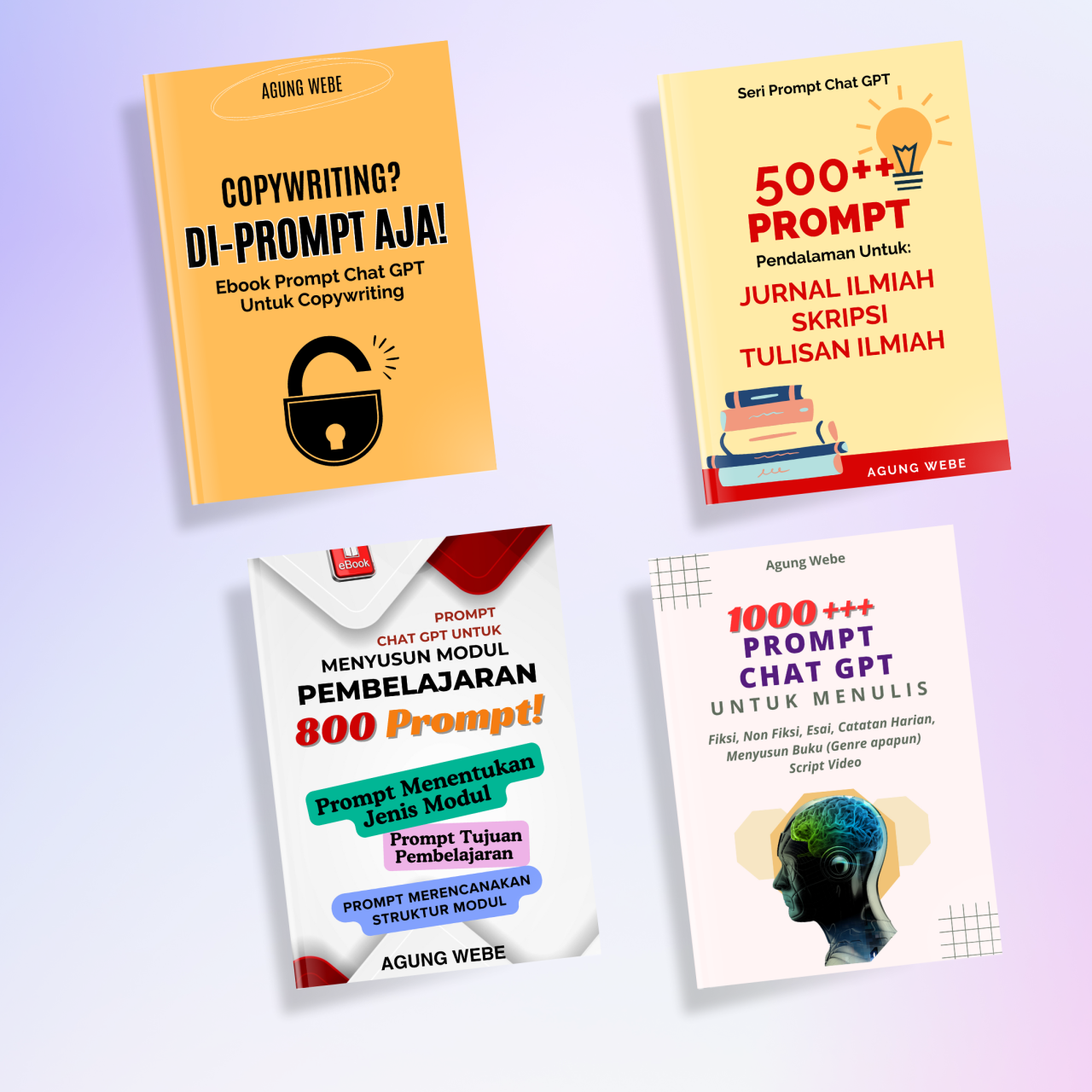
E-Guides and Ebooks Your Complete Guide
E guides and ebooks – E-guides and ebooks: They’re everywhere! From quick how-to guides to sprawling novels, digital publishing has exploded. But how do you navigate this world, whether you’re an aspiring author or a savvy reader? This guide dives deep into the market, creation, distribution, and monetization of e-guides and ebooks, offering practical advice and insights to help you succeed.
We’ll cover everything from market trends and choosing the right ebook format to crafting compelling content, building a successful marketing strategy, and navigating the legal landscape. We’ll also explore different monetization options and show you how to build a thriving business around your digital creations. Get ready to unlock the potential of the e-publishing world!
Market Analysis of E-Guides and Ebooks
The e-guide and ebook market is a dynamic and ever-evolving landscape, influenced by technological advancements, changing consumer preferences, and the broader digital publishing industry. Understanding current trends is crucial for authors and publishers seeking success in this competitive space.
Current Market Trends in the E-guide and Ebook Industry
The ebook market continues to show growth, albeit at a slower pace than in its initial boom years. We’re seeing a shift towards subscription models, with platforms like Kindle Unlimited and Scribd gaining popularity. This offers readers access to a vast library for a recurring fee, while providing authors with a different revenue stream. Simultaneously, there’s a resurgence of interest in niche and specialized ebooks, catering to specific interests and demographics.
This trend indicates a move away from mass-market appeal towards targeted content that resonates deeply with specific reader communities. Self-publishing remains a significant force, empowering authors to control their creative work and distribution. However, successful self-publishing requires a strong marketing strategy and a clear understanding of the market.
Top Three Most Popular Ebook Categories and Their Appeal
Three consistently popular ebook categories include fiction (romance, thriller, fantasy, etc.), self-help/personal development, and business/finance. The appeal of fiction lies in its escapism and the emotional connection it fosters with readers. Self-help and personal development ebooks tap into the universal desire for self-improvement and personal growth, offering practical advice and strategies for achieving specific goals. Business and finance ebooks cater to the growing interest in financial literacy and professional development, offering insights into investing, entrepreneurship, and career advancement.
These categories’ popularity stems from the diverse needs and interests of a broad readership.
Pricing Strategies for E-guides and Ebooks
Pricing strategies for e-guides and ebooks vary widely depending on factors such as content length, perceived value, target audience, and competition. Many authors use a tiered pricing system, offering different versions of the same ebook (e.g., a basic version and a premium version with bonus content). Others employ freemium models, offering a free introductory chapter or a stripped-down version to attract readers and then upselling to the full version.
Dynamic pricing, adjusting prices based on demand or seasonal trends, is also becoming increasingly common. Ultimately, effective pricing requires a careful consideration of market dynamics and the perceived value of the product.
Ebook Formats: Advantages and Disadvantages
The choice of ebook format significantly impacts the reader experience and the author’s distribution capabilities. Here’s a comparison of popular formats:
| Format | Advantages | Disadvantages | Best Use Case |
|---|---|---|---|
| Preserves original formatting, widely compatible | Can be difficult to reflow on different devices, limited interactive features | Documents, technical manuals | |
| EPUB | Reflows text to fit different screen sizes, supports interactive elements | Can sometimes have formatting inconsistencies across devices | Fiction, non-fiction books |
| MOBI | Optimized for Kindle devices, good for readability | Limited compatibility with other ereaders | Amazon Kindle ecosystem |
| AZW3 | Optimized for Kindle devices, supports DRM | Limited compatibility, requires Kindle software/device | Amazon Kindle ecosystem, DRM protection |
E-Guide and Ebook Distribution and Marketing

So, you’ve poured your heart and soul into crafting the perfect e-guide or ebook. Now comes the crucial next step: getting it into the hands (or rather, onto the devices) of your target audience. This involves choosing the right distribution channels and crafting a compelling marketing strategy. Let’s explore the options available to you.
E-Guide and Ebook Distribution Platforms, E guides and ebooks
Choosing the right platform(s) to sell and distribute your e-guide or ebook is paramount. Your decision will depend on factors like your target audience, your budget, and the level of control you desire.
- Your Own Website: Selling directly from your website offers maximum control and profit margins. You’ll need to handle all aspects, including payment processing and customer service, but you keep all the revenue. This requires a robust e-commerce solution.
- Amazon Kindle Direct Publishing (KDP): KDP is a massive marketplace with a huge built-in audience. It’s easy to use, and Amazon handles payment processing and customer service. However, you’ll share a percentage of your profits with Amazon.
- Gumroad: Gumroad is a popular platform for digital products, offering a straightforward process for selling and delivering ebooks. It provides tools for marketing and managing your sales, but it takes a smaller cut than some other platforms.
- Payhip: Similar to Gumroad, Payhip offers a user-friendly interface for selling digital products. It’s known for its ease of use and flexibility in pricing and marketing options.
- Etsy: While primarily known for handmade goods, Etsy also allows the sale of digital products. This could be a good option if your ebook complements a physical product you sell on the platform or if your target audience frequents Etsy.
Self-Publishing vs. Traditional Publishing
The choice between self-publishing and going through a traditional publisher significantly impacts your control, revenue, and the overall process.
Self-Publishing: You retain complete creative control and a larger percentage of royalties. However, you’re responsible for all aspects of editing, cover design, marketing, and distribution. This requires significant time and effort, but the potential rewards are substantial.
Traditional Publishing: A publisher handles much of the heavy lifting – editing, cover design, marketing, and distribution. This can save you considerable time and effort, but you’ll typically receive a smaller percentage of royalties and have less control over the final product and its marketing.
Creating an Ebook Launch Marketing Campaign
A well-planned marketing campaign is crucial for a successful ebook launch. Here’s a step-by-step guide:
- Pre-Launch Buzz: Build anticipation by announcing your ebook launch on social media, your email list, and your website. Offer early bird discounts or exclusive content to incentivize pre-orders.
- Launch Day Promotion: Maximize visibility on launch day with targeted social media posts, email blasts, and paid advertising. Consider running a giveaway or contest to generate excitement.
- Post-Launch Engagement: Continue promoting your ebook after the launch. Engage with readers, respond to reviews, and consider offering additional content or updates.
- Targeted Advertising: Utilize paid advertising platforms like Facebook Ads or Google Ads to reach specific demographics interested in your ebook’s topic.
- Public Relations: Reach out to relevant bloggers, influencers, and media outlets to secure reviews and mentions.
Utilizing Social Media for Ebook Promotion
Social media offers powerful tools for reaching potential readers.
Effective social media marketing requires a strategic approach. This involves identifying the platforms your target audience frequents, creating engaging content (snippets, quotes, behind-the-scenes glimpses), running contests and giveaways, collaborating with influencers, and utilizing relevant hashtags.
For example, a cookbook author might share visually appealing recipes on Instagram, while a business-focused e-guide author could participate in LinkedIn discussions and share valuable insights on Twitter. Consistent posting and engagement are key to building a strong online presence.
Monetization Strategies for E-Guides and Ebooks
So, you’ve poured your heart and soul into creating an amazing e-guide or ebook. Now comes the crucial part: making money from your hard work. There are several effective monetization models available, each with its own pros and cons. Choosing the right one depends on your target audience, the content’s value, and your long-term goals.
One-Time Purchase Model
This is the classic approach. You set a price for your e-guide or ebook, and buyers pay once to gain access. It’s straightforward, easy to implement, and provides a predictable income stream. However, it relies heavily on initial sales, with limited recurring revenue. Pricing strategies are key here.
A well-researched price point, considering market value and competitor pricing, is crucial for success. For example, a comprehensive guide on advanced techniques might command a higher price ($47-$97) than a beginner’s guide to social media marketing ($17-$27). The perceived value of your content directly impacts the price you can charge.
Subscription Model
This model offers recurring revenue, making it attractive for long-term sustainability. You could offer a monthly or annual subscription that grants access to your ebook, along with bonus content, updates, or exclusive community access. This is particularly effective for content that requires regular updates, such as market trend reports or software tutorials. Think of it like a Netflix subscription for knowledge; users pay regularly for ongoing access and value.
A successful subscription model often relies on delivering consistent, high-quality content and a strong sense of community.
Affiliate Marketing Opportunities
Affiliate marketing can significantly boost your ebook’s revenue. By partnering with complementary businesses or individuals, you can earn commissions by recommending their products or services within your ebook or through promotional emails to your subscribers. For example, an ebook on starting a blog could include affiliate links to web hosting services, email marketing platforms, or design tools. The key is to ensure the recommendations are relevant and genuinely beneficial to your readers; otherwise, you risk damaging your credibility.
Building an Email List
An email list is invaluable for promoting your e-guide and ebooks. It allows you to directly connect with your audience, nurture relationships, and announce new releases or special offers. You can build your list by offering a lead magnet – a free resource, such as a checklist, template, or mini-guide – in exchange for email addresses. Promote your lead magnet on social media, your website, and through other marketing channels.
Segmenting your email list based on interests or purchase history allows for more targeted and effective promotions. Email marketing allows for personalized communication, building stronger relationships with your audience and encouraging repeat purchases.
Cost Breakdown for Creating and Marketing an Ebook
Creating and marketing an ebook involves various costs. These include:
| Cost Category | Example Costs |
|---|---|
| Writing & Editing | $500 – $5000+ (depending on length and expertise) |
| Design & Formatting | $100 – $500+ (cover design, interior layout) |
| Software & Tools | $0 – $100+ (writing software, graphic design tools) |
| Marketing & Advertising | $100 – $1000+ (social media ads, email marketing services) |
Remember, these are just estimates. Costs can vary significantly based on your project’s scope and your chosen marketing strategies. The price point of your ebook should cover these costs and generate a profit.
Legal and Ethical Considerations for E-Guides and Ebooks

Creating and distributing ebooks and e-guides comes with a set of legal and ethical responsibilities. Understanding these aspects is crucial for avoiding legal trouble and building a trustworthy brand. Ignoring these considerations can lead to significant financial and reputational damage.
Copyright Laws Related to Ebooks and E-Guides
Copyright law protects the original works of authorship, including text, images, and code within your ebooks. This protection automatically exists from the moment of creation; registration with the relevant copyright office is recommended but not strictly required for protection. Copyright grants the creator exclusive rights to reproduce, distribute, display, and create derivative works. This means you control how your ebook is copied, shared, and used.
Infringement can lead to legal action, including hefty fines and legal fees. Understanding fair use principles is also vital; fair use allows limited use of copyrighted material for purposes like criticism, commentary, news reporting, teaching, scholarship, or research. However, fair use is a complex legal doctrine, and it’s best to err on the side of caution and obtain permission whenever possible.
Ethical Considerations for Using Images and Other Copyrighted Material
Using images, graphics, or other copyrighted material without permission is copyright infringement, regardless of whether your ebook is free or for sale. Even if you find an image online, assuming it’s free to use is risky. Always check the license associated with the image (Creative Commons licenses are common, and clearly define permissible uses). If a license isn’t explicitly stated, it’s safest to assume the image is copyrighted and requires permission from the copyright holder.
Seeking permission often involves contacting the copyright holder and negotiating terms of use, which might include a fee. Using royalty-free stock photos or creating your own original images are safer alternatives. Remember, ethical considerations extend beyond just legal compliance; using others’ work without attribution is also ethically questionable and can damage your credibility.
Best Practices for Ensuring Ebook Accessibility
Creating accessible ebooks ensures that people with disabilities can enjoy your content. This is not only ethically right but often legally mandated in some jurisdictions. For visually impaired readers, providing your ebook in formats like DAISY (Digital Accessible Information System) or EPUB3 with embedded text-to-speech capabilities is crucial. For users with motor impairments, consider using keyboard navigation and screen reader compatibility.
Using sufficient color contrast in your ebook design and providing alternative text descriptions for all images (alt text) are essential accessibility features. Proper use of headings, lists, and other structural elements helps screen readers interpret the content logically. These practices ensure your ebook is usable by a wider audience, demonstrating inclusivity and ethical responsibility. Failure to consider accessibility can limit your readership and potentially lead to legal challenges depending on applicable laws and regulations.
Importance of Disclaimers and Liability Statements
Including disclaimers and liability statements in your ebooks protects you from potential legal issues. Disclaimers clearly state that the information provided in your ebook is for informational purposes only and shouldn’t be considered professional advice. This is particularly important for e-guides offering advice on topics like health, finance, or legal matters. A liability statement limits your legal responsibility for any damages or losses that might result from using the information in your ebook.
These statements don’t completely shield you from liability, but they significantly reduce your risk. For example, a disclaimer in a fitness guide might state that the exercises are not suitable for everyone and readers should consult their doctor before starting any new fitness program. Similarly, a financial guide might include a disclaimer that the information provided is not financial advice and shouldn’t be considered a substitute for professional consultation.
Visual Design for E-Guides and Ebooks

Creating visually appealing e-guides and ebooks is crucial for reader engagement and ultimately, sales success. A well-designed ebook doesn’t just present information; it enhances the learning experience, making the content more accessible and enjoyable to consume. This section will explore key aspects of visual design to help you create a product that readers will love.
High-Quality Images and Graphics
High-quality images and graphics significantly improve the visual appeal and overall impact of your ebook. Poor quality images can detract from professionalism and make your ebook look amateurish. Using crisp, clear images relevant to your content enhances understanding and memorability. For example, if your ebook is about cooking, using vibrant, high-resolution photos of the finished dishes will make it much more engaging than using blurry or pixelated images.
Consider using professionally taken photographs or royalty-free stock images from reputable sources to ensure quality. Remember to optimize images for size to avoid slowing down loading times.
Font and Layout Choices for Readability
Choosing the right fonts and layout is essential for readability and ease of navigation. Avoid overly decorative or difficult-to-read fonts. Sans-serif fonts like Arial, Calibri, or Helvetica are generally preferred for their clean and modern appearance, making them easy on the eyes for extended reading. Use a consistent font throughout the ebook, varying only for headings and subheadings to maintain a cohesive look.
Layout should be well-structured with clear headings, subheadings, and ample white space to prevent the text from looking cluttered. Consistent use of bullet points, numbered lists, and visual breaks improves readability and makes information easier to digest.
Effective Ebook Cover Designs
The cover is the first impression your ebook makes. A poorly designed cover can significantly impact sales, regardless of the quality of the content inside. Effective ebook covers usually include a compelling image or graphic, a clear and concise title, and the author’s name. Consider using bold colors and striking visuals to grab attention. For instance, a business ebook targeting entrepreneurs might feature a powerful image of a cityscape, symbolizing ambition and success.
A cookbook might showcase a mouthwatering photo of a finished dish. The cover should accurately reflect the ebook’s content and target audience. Research successful covers in your niche to gain inspiration, but always aim for originality.
Use of White Space and Visual Hierarchy
White space, or negative space, is crucial for creating a clean and uncluttered look. It allows the reader’s eye to rest and prevents the page from feeling overwhelming. Strategic use of white space improves readability and enhances the overall aesthetic appeal. Visual hierarchy involves organizing elements based on importance. Larger headings, bold text, and strategic use of images draw attention to key information, guiding the reader through the content in a logical flow.
For example, using a larger font size for chapter titles, followed by smaller font sizes for subheadings and body text, creates a clear hierarchy and enhances readability.
Final Conclusion: E Guides And Ebooks
Creating and selling e-guides and ebooks is a dynamic and rewarding journey. This guide has provided a solid foundation, equipping you with the knowledge and strategies to navigate the complexities of the digital publishing world. Remember, success hinges on understanding your audience, crafting high-quality content, and implementing a smart marketing plan. So, dive in, get creative, and watch your e-guides and ebooks take flight!
Top FAQs
What’s the difference between an e-guide and an ebook?
While often used interchangeably, e-guides tend to be shorter, more focused, and often instructional, while ebooks can encompass a broader range of lengths and topics, including fiction and non-fiction.
How much does it cost to create an ebook?
Costs vary greatly depending on factors like cover design, editing, and whether you hire professionals. You can create a basic ebook for free using readily available tools, or invest thousands in a professionally designed and marketed product.
Where can I sell my ebooks?
Many platforms exist, including Amazon Kindle Direct Publishing (KDP), Gumroad, and your own website. Each offers different advantages and disadvantages regarding fees, reach, and control.
How can I protect my ebook from piracy?
While complete protection is impossible, using digital rights management (DRM) can deter some piracy. Focus on building a strong brand and community to encourage readers to purchase legally.
